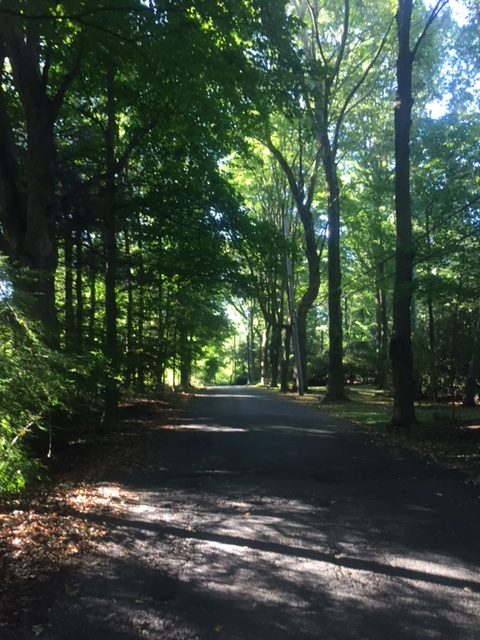
Fall is officially here, and with it comes some pretty big changes. Marathoners are peaking for the NYC, Hartford, and Philadelphia Marathons here on the East Coast. Cyclo-cross races are only just starting to enter their competitive season, and multi-sport athletes are entering their transition/ off-season, except those doing late fall races like Ironman Florida, Florida 70.3 and the Kona Hawaii Ironman World Championships. If we exclude those nutters, the mere mortals that have raced their hearts out, gotten up at the crack of dawn so many times, and trained so hard are ready for the excitement of the off-season. Regardless of when your final race is, September or November, we are entering the time of the year when our training focus changes.
Periodization is a concept credited to Tudor Bompa, and it is what we as coaches use to create more than just our Annual Training Plans (ATP) for athletes. Science and studies have shown over and over that periodization, whether macro or micro, creates the best results. If we plan the year, or total training period properly (4 year periods for Olympians), 3 month periods for Couch to 5K in some cases, then we may expect specific adaptations to imposed demands that were prescribed appropriately at the right time. Another way of saying that would be, “train the right energy systems at the right times, and get the best results.” That sounds good, doesn’t it? But how do we know what to train when, and why can’t we maintain race peak paces and weight year round?

The goal of this post is to start a high level discussion with you about what you can accomplish in the next three to six months in your given sport. With the exception of cyclo-cross athletes, who are just now entering their competition phase, the rest of us may take liberties and consider October to December our off-season. The off-season can be contentious for many. Letting go of hard-won fitness, strength, speed or power can be morally crushing, depressing even. Athletes we work with often say, “How can I keep my power up all winter and get more power next year?” To them I respond, “It is the off-season. You must back off, let your body adapt and recover from all the hard racing, and we will get more power built into your body over the next six months.” Those who wish to remain uninjured and come back stronger listen, and then they do the following:
Week 1 through Week 3 Post Major Races – Focus on recovery. All workouts are Zone 1 or low Zone 2. Any strength workouts in the gym are at 60-75% of 1 max rep weight, and no intervals or elevated heart rate is allowed. The body rebuilds itself, cardiovascular fitness drops, muscular power and strength temporarily drop, extra sleep is needed and taken, and elite or race weight athletes may gain 1-2 pounds.
Week 4 through Week 8 Transition/Off-Season – Athletes are now back to training in their respective sport, but at a reduced volume. Intensity is reintroduced, and LT workouts are included, however they are incorporated in fun and hopefully inventive ways. The road runner has fun running naked (i.e., technology-free) with friends and groups, or they may take to the trails and have fun powering up hills and gliding down valleys, cyclists start riding fall 35-mile to 100-mile foliage fun rides with rest stops and cookies, or they may take to the trails to explore and have fun blasting up short hills while working core balance zipping between trees and rocks downhill. The goal of this period is to wake your body back up, change up the routine, and find the fun in training again. If we do it right, then we can come through this period feeling great, enjoying the Indian summer, or first flurries, and smiling like 8 year olds just learning to ride bikes.
Week 9 – 16 Limiters and Strength – Athletes start heading back into the gym a minimum of twice a week – and ideally three times a week – by Week 9. If is time to rebuild the strength to support the axial skeleton, and to make sure you can get as strong as you possibly can in the areas needed for your sport. While we aren’t maxing our reps, we are in a hypertrophy phase of muscle building, and a structured plan is needed. Strength in the off-season leads to less injuries in-season, Rehab is Prehab! Now is also the time to address your personal limiters. Joe Friel, to my mind the father of triathlon coaching, was the first I heard talk about limiters and addressing those limiters in the off-season to improve. If you are a runner and continually get shin-splints, or struggle with uphills, or have achy knees running downhill, now is the time to get your body trained to do those things, but it does not start by doing the things that hurt. It starts by breaking down the movements and systematically perfecting each piece of them. Practice does not make perfect, perfect practice makes perfect. Swimmers need to focus on form and each practice has a purpose, it has a focus point, and they focus on that point every single practice. As amateur athletes, most of us don’t practice this way; we don’t think about the goal of each session and tune in 100%, we follow the directions and get it done. Now is the time to be mindful and mindfulness and focus are skills. It takes time to develop these abilities and the off-season is when to do it. The next time you’re headed to the gym to do your strength workout, headed to the pool to swim, or the woods to ride your bike, think about your goal for the workout and focus on that goal. After the workout you can forget it and go about business as normal, but when you’re “playing” or training, be in the moment and make your goal to be better than when you started.
The athletes that we see make the biggest changes for the better each year, and those looking to improve, work their strength and limiters from October through March, and they have marked goals along the way. Their systematic approach to improvement allows them to stay motivated and to see results. This time of year doesn’t have to be a grind or time-intensive. But if you always do what you always did, you won’t keep getting what you always got. You’ll lose strength, or worse, get hurt.
My transition season began Sunday, September 10th, the day after the Ironman 70.3 World Championships. I took two weeks to not even think about a “workout” or even look at my bike. A gentle swim and 3.5 mile run came next and by week three I was ready to try a trainer ride. The pressure post-race was gone, and it felt so good to let go a little bit from my workouts. This next month, as I coach cyclo-cross and mountain biking I’ll be on my off-road bikes more, I’ll be trail running and will keep swimming because it makes my body feel good. Strength sessions will be incorporated and my limiters addressed. Having fun workouts planned is pretty liberating, recharges my batteries, and when feeling better I start moving faster. My workouts all have a goal, but they are not at the intensity and duration as in season, and therefore are a lot more “fun”. Many athletes have started emailing to schedule their underwater swim analysis, and functional movement screens to address imbalances, and also to discuss what fun things they want to incorporate this fall in their play training. Spartan Race anyone?
Now is the time for your limiters to be addressed and for us to have fun, let’s come up with a plan that will get you stronger, better, and faster this off-season!

